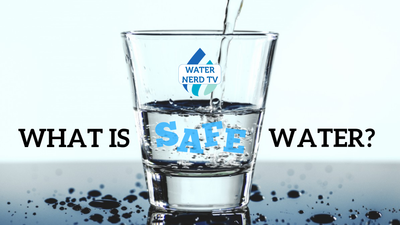Analies Dyjak | Policy Nerd
**Updated July 26, 2019 to include current data
For Hydroviv’s assessment of Jackson, Mississippi drinking water, we collected water quality test data from Jackson's annual Consumer Confidence Report and the U.S. Environmental Protection Agency. We cross referenced Jackson water quality data with toxicity studies in scientific and medical literature. The water filters that we sell at Hydroviv are optimized to filter out contaminants that are found in Jackson drinking water.
High Lead Levels in Jackson Drinking Water
Lead enters tap water through old lead service pipes and lead-containing plumbing. 10% (or the 90th percentile) of taps tested for lead contamination had concentrations over 8 parts per billion. However, last year the 90th percentile was 16 parts per billion. It's unusual to see a municipality improve lead levels this drastically in just one year. The federal action level for lead is 15 parts per billion, but agencies such as the Center for Disease Control and American Academy of Pediatrics recognize that there is no safe level of lead for children. Additionally, municipalities are only required to test a handful of homes every few years, so these super high levels reported in Jackson’s annual water quality report might not even reflect the lead levels coming from your faucet. Lead exposure can cause developmental issues, lowered IQ, and damages to the kidneys and brain. In August of 2018, the city of Jackson sent a notice to all residents acknowledging the lead violation. The notice gave standard recommendations for preventing lead exposure, such as allowing tap water to run for 2 minutes before use, avoiding hot water for drinking or cooking, eliminating tap water for baby formula, and getting your child’s lead levels checked by a doctor.
Disinfection Byproducts In Jackson Drinking Water
DBPs are formed when chlorine-based disinfectants that are routinely added to the water supply to kill bacteria, react with organic matter. According to the most recent report, concentrations of haloacetic acids averaged 54 parts per billion but reached levels as high as 45 parts per billion. Concentrations of trihalomethanes averaged 58 parts per billion but reached levels as high as 68 parts per billion. For a bit of perspective, EPA’s maximum contaminant level for haloacetic acids is 60 parts per billion and 80 parts per billion for trihalomethanes. Health and regulatory agencies have very little knowledge about the adverse health effects of DBPs, and their toxicity. EPA has stated that they have been linked to an increased risk of bladder cancer, as well as kidney, liver, and central nervous system problems.
Chromium 6 In Jackson Drinking Water
Chromium 6 is a highly toxic metal that is currently unregulated by the EPA. Chromium 6 pollution is associated with metal processing, tannery facilities, chromate production, stainless steel welding, and pigment production. Concentrations of Chromium 6 average 48.5 parts per trillion. This is double the concentration determined to have a negligible impact on cancer risk. EPA has acknowledged that Chromium 6 is a known human carcinogen through inhalation, but is still determining its cancer potential through ingestion of drinking water. Lung, nasal and sinus cancers are associated with Chromium 6 exposure. Ingestion of extremely high doses of chromium 6 compounds can cause acute respiratory disease, cardiovascular, gastrointestinal, hematological, hepatic, renal, and neurological distress which may result in death.
Other Articles We Think You Might EnjoyLead In Drinking Water: What You Need To Know
What Are Disinfection Byproducts?
Breakdown of The Lead and Copper Rule



